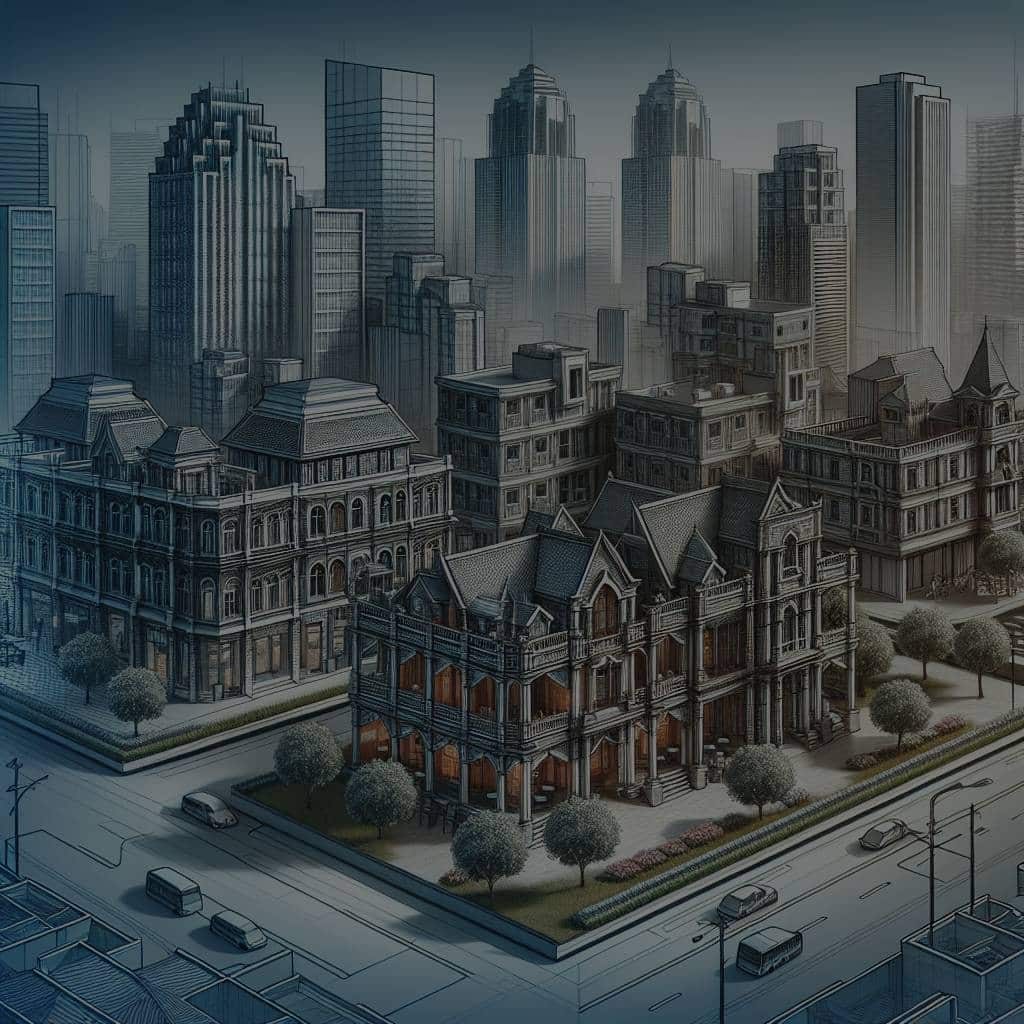What Strategies Can Be Employed to Preserve Historical Architecture in New Developments?

The preservation of historical architecture is a central issue in contemporary urban development. It’s a delicate balancing act, involving the need to construct new buildings for economic growth and community needs, while also preserving the rich heritage embodied in our historic buildings. This article examines the strategies that can be employed to preserve historical architecture in new developments.
Recognizing the Significance of Historic Buildings
Historic buildings are not simply physical structures; they are crucial elements of our cultural heritage. Built with traditional materials and construction techniques, these edifices reflect the shared history and identity of a community. In the face of rapid urban development, there is an urgent need to devise strategies for the preservation and sustainable rehabilitation of these buildings.
En parallèle : What Are the Best Practices for Real Estate Developers to Reduce Carbon Footprint?
These strategies require a comprehensive understanding of the intrinsic value of historic buildings. Research and documentation are essential first steps, gleaning detailed information on the architectural design, construction materials used, and the cultural significance of these buildings. Only then can appropriate strategies be devised for their preservation.
Sustainable Rehabilitation of Historic Buildings
Sustainable rehabilitation is gaining momentum as a primary strategy for preserving historic buildings. This approach focuses on making use of existing structures and materials to meet the needs of the present, without compromising the heritage they represent.
Sujet a lire : How to Ensure Compliance with the UK’s Building Safety Act in New Constructions?
Such rehabilitation projects make a positive contribution to sustainability by reducing the demand for new materials and energy used in construction. For instance, the conservation of a historic building can save between 50 and 75 percent of the energy that would otherwise be used to construct a new building of the same size.
Moreover, these projects contribute to the conservation of resources like water and air. By maintaining the existing building fabric, the need for new materials and the associated resource extraction and transportation costs can be significantly reduced.
Energy Efficiency in Historic Building Preservation
Historic buildings were generally designed in response to their local climate. While they might not be as energy-efficient as modern buildings, they often have inherent sustainable features that can be leveraged in their preservation.
For example, thick stone walls and high ceilings can provide excellent thermal mass, reducing the need for artificial heating and cooling. Furthermore, traditional construction methods can be adapted to incorporate modern energy-saving technologies without compromising the historic character of the building.
Preservation strategies should also consider the building’s role within its broader context. For instance, the restoration and retrofitting of historic buildings can stimulate local economies by creating jobs and attracting tourists.
Community Involvement and Cultural Preservation
Preserving historical architecture goes beyond maintaining physical structures. It’s about preserving the cultural heritage that these buildings represent. In this regard, community involvement is crucial.
Community members can provide valuable insights into the cultural significance of historic buildings and landscapes. Their input can help identify the cultural values worth preserving, and the ways in which these can be integrated into new developments.
Furthermore, community involvement can foster a sense of ownership and stewardship, encouraging locals to actively participate in preservation efforts. This can lead to the successful rehabilitation of historic buildings, ensuring they remain functional and relevant to the community’s needs and aspirations.
Future-Proofing Historic Buildings
In order to ensure the survival of historic buildings, preservation strategies need to consider potential future challenges. These may include climate change, demographic shifts, or changes in economic and social conditions.
Future-proofing strategies may involve adapting historic structures to accommodate new uses, or improving their resilience to climate change through the use of sustainable materials and design features. For instance, this could involve installing green roofs to manage stormwater or using energy-efficient windows to improve thermal performance.
In conclusion, the preservation of historic buildings in the face of new developments is a complex but necessary challenge. It requires a delicate balance between preserving the past and accommodating the needs of the future. However, with innovative and sustainable strategies, it’s possible to ensure that our historic buildings continue to enrich our communities for generations to come.
Adaptive Reuse: A Solution to Preserve Historical Architecture
In the quest to strike a balance between heritage preservation and modern development, the concept of adaptive reuse has gained significant traction. Adaptive reuse refers to the process of reusing an old site or building for a purpose other than it was originally built or designed for.
Historic buildings often have strong architectural features and a distinctive character that is difficult to replicate. These buildings can be adaptively reused, preserving their unique qualities while allowing for functional changes that meet modern requirements. This approach not only helps to conserve our cultural heritage but also contributes to sustainable building practices.
In addition, adaptive reuse can have significant environmental benefits. Reusing a building usually requires less construction materials and generates less waste compared to demolition and rebuilding. It can also reduce the need for land development, helping to preserve natural habitats and biodiversity.
However, successful adaptive reuse requires careful decision-making and planning, taking into account the building’s historical significance, structural integrity, and potential for modern use. It also requires the involvement of various stakeholders, including heritage experts, architects, urban planners, and the local community.
Heritage Sites as Catalysts for Quality Life and Sustainable Architecture
Historic preservation can also be viewed as a means to improve the quality of life. Heritage sites often have a unique aesthetic and cultural value that contributes to the local identity and sense of place. Preserving these sites can enhance the aesthetic appeal of an area, make it more attractive to residents and visitors, and foster a sense of community pride.
Moreover, historic buildings can serve as tangible examples of sustainable architecture. Many traditional building design and construction techniques have inherent sustainability features. For instance, the use of local, natural building materials can reduce environmental footprints, while traditional design features can enhance energy efficiency and comfort.
Preserving historic buildings also provides an opportunity to educate future generations about our cultural history and promote sustainable design practices. By showcasing the value of historical architecture and its relevance to modern sustainability challenges, we can inspire future generations to value and continue the practice of heritage preservation.
Conclusion
In the face of rapid urbanization and technological advancement, the task of preserving historical architecture is more pressing than ever. However, as we have explored, there are various strategies that can be employed, from sustainable rehabilitation and adaptive reuse to community involvement and future-proofing.
Key to all of these strategies is a deep understanding and appreciation of our cultural heritage. Each historic building has its own story to tell – about the people who designed and built it, the people who lived or worked there, and the time in which it was created.
As we continue to build our future, it’s essential that we make efforts to preserve these stories and the physical structures that embody them. By doing so, we can ensure that our cultural heritage continues to enrich our lives, inform our decision making, and inspire sustainable design practices for the benefit of future generations.
